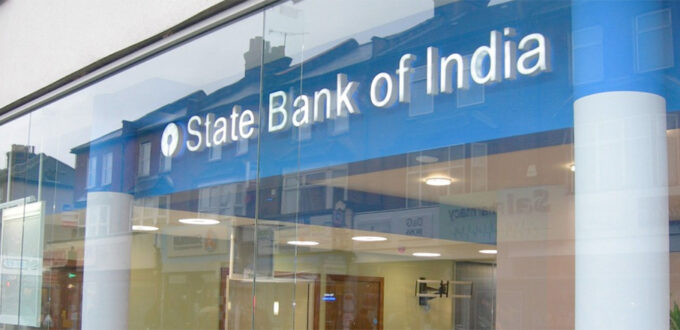State Bank of India reported a net profit of 6,068 Crore Rs for the June quarter, losing the estimated road with a broad difference due to the loss of the Ministry of Finance eroding profitability.
Estimated average of ten brokers surveyed by MoneyControl show that net profit is estimated to reach RS 7,496 CRORE-growth 16 percent year-to-year. Conversely, the largest lender in India reported a decline of 6.7 percent in profit after tax for the June quarter.
SBI has the largest fixed fixed income portfolio in which government securities form large discounts. The sharp increase in the bonds during the April-June quarter means that the lender must cause large losses in his trading book. When the bonds rise, their prices fall. The bank is given a mandate to mark their investment for applicable market prices and impose profits or losses to the profit or loss account, also known as the profit or loss of mark-to-market.
Hit Mark-to-Market dragged SBI’s unattractive revenue down on a large scale to 2,312 crore hospitals only for the reported quarter compared to Rs 11,802 Crore a year ago. This resulted in a decrease in 32.8 percent in operating profit to RS 12753 Crore for the quarter.
Beyond the hit treasury, the core performance of SBI is tough. Net interest income grew by 12.87 percent to Rs 31,196 Crore for the June quarter behind the 14.9 percent loan growth and a stable margin. Furthermore, the provisions for poor loans decreased because the quality of assets was increased for banks. The provision decreased by 15 percent to RS 4268 Crore for three months ended in June, assisting net profit growth.
The SBI loan book shows an area -based growth of 14.9 percent because the company’s loan and retail book grows at a healthy speed. Most analysts expect loan growth to be 14-15 percent for the quarter. Company loans grew 10.57 percent of years-year while retail books grew faster by 18.58 percent powered by strong home loan growth. Net interest margins come at 3.23 percent, an increase of 8 basis points. One basis of points is a hundredth of the percentage points. Who said, Nim descended sequentially.
Because SBI loans get more interest due to the increase in interest rates taken by the bank during the quarter, low -cost deposit growth helps to maintain low funds. The current account deposit and savings grow by 6.5 percent and form 45.33 percent of the total deposit books. The overall deposit grew by 8.73 percent for the quarter.
SBI’s bad loan ratio increased from last year and a strong pillow that has been stronger. The total pile of bad dirty loans decreased by 15 percent from last year to RS 1.13 Lakh Crore at the end of June. Dirty bad loans form 3.91 percent of the loan book compared to 5.32 percent a year ago. With a net base, non-work loans form only 1 percent of the total loan books. Slippage also remains contained during the quarter with a slip ratio of 1.38 percent, down from 2.47 percent a year ago. Which said, the metric quality of assets weakened sequentially. Slippage ratio rose 95 basis points from the previous quarter.


No Comments Yet